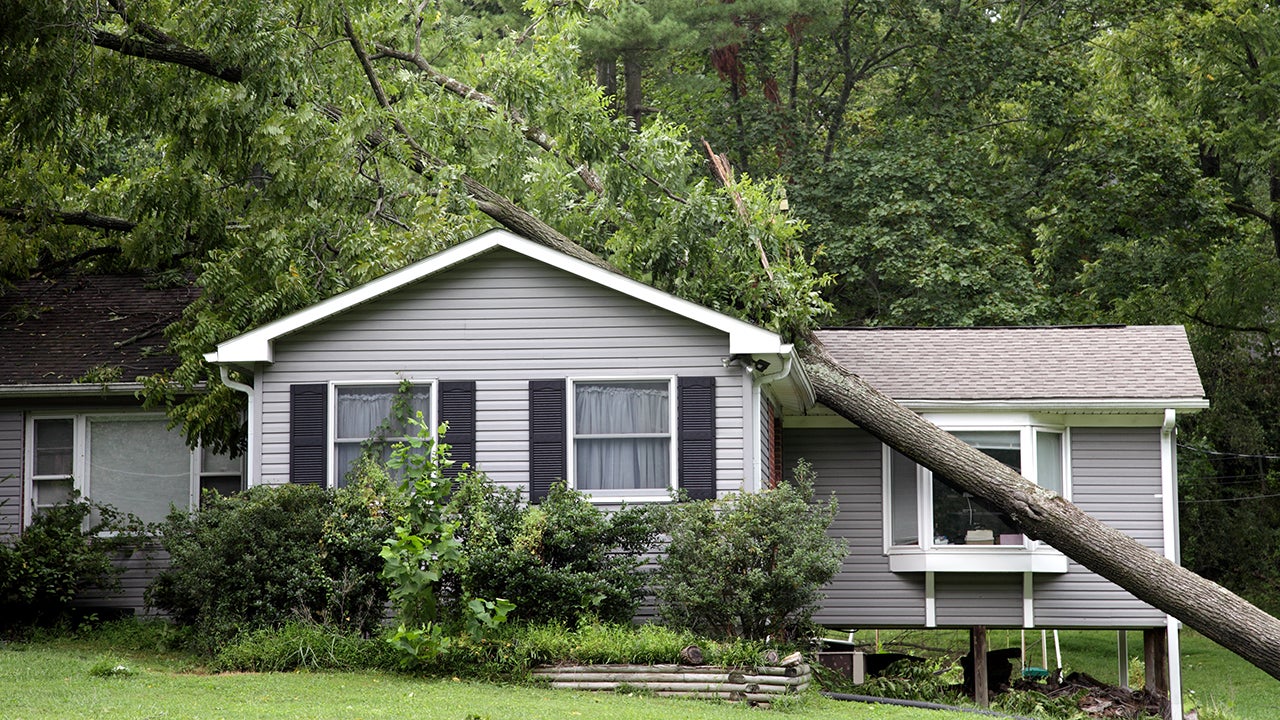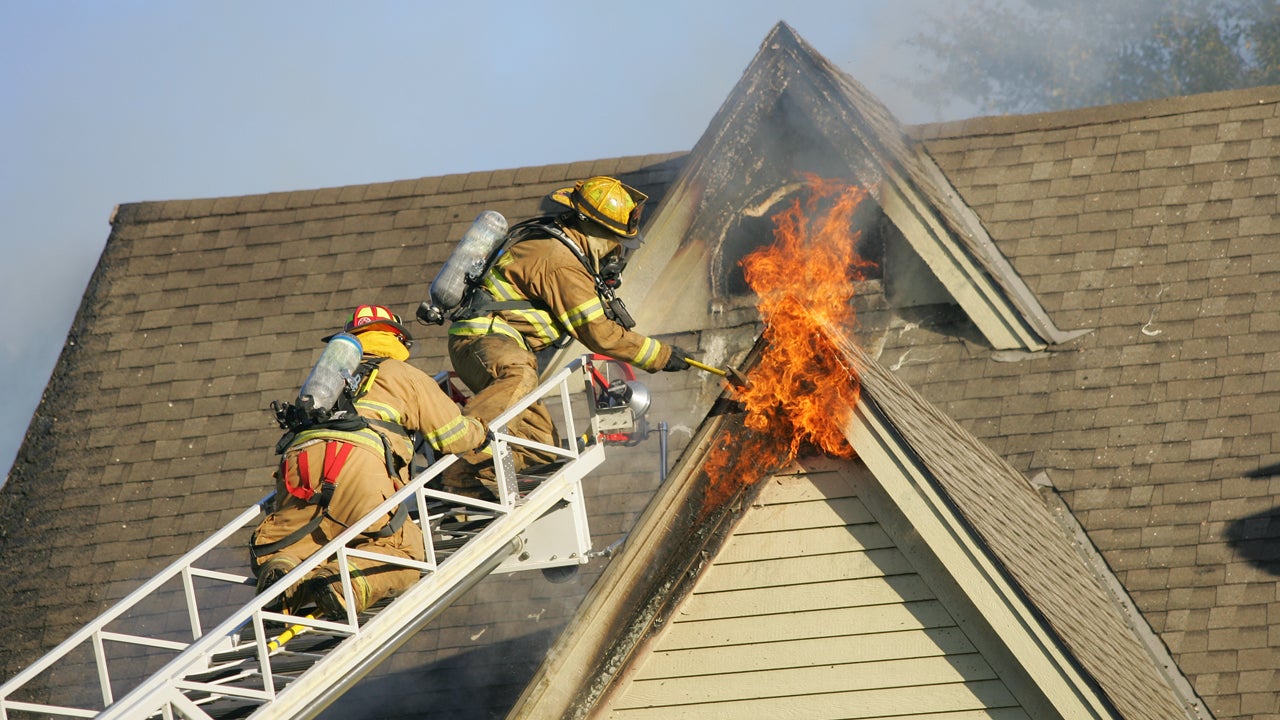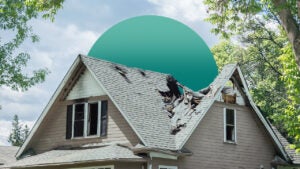The difference between homeowners insurance and hazard insurance

If you’re closing on a home, you may hear your mortgage company use the terms “hazard insurance” and “home insurance.” Although they’re sometimes said interchangeably, they’re not exactly the same thing. Hazard insurance is coverage for the physical structure of your home against losses like fire, wind, lightning and hail (to name a few). Home insurance, on the other hand, includes protection for your home’s physical structure, your personal property, liability insurance and other coverage types. Bankrate’s insurance editorial team digs into hazard insurance to help you understand how it fits into your homeowners insurance policy.
Is homeowners insurance the same as hazard insurance?
No, hazard insurance is not the same thing as homeowners insurance, but it is part of your homeowners insurance policy. Hazard insurance is one part of the average homeowners insurance policy — it is not something you need to purchase separately. It plays a role in your homeowners insurance, but it’s not an interchangeable term with homeowners insurance.Hazard insurance and dwelling coverage are the same thing. Dwelling insurance is the part of your policy that covers your actual house — from roof to foundation — but not the contents of your home or other structures. It is often called hazard insurance because the average homeowners policy includes coverage for a list of perils, or causes of loss, that can damage or destroy your home.
Home insurance includes hazard insurance. The term “hazard insurance” just refers to one part of your home insurance policy, the part that covers your home’s physical structure.
Another term you may hear from your mortgage lender is “mortgage insurance.” This is completely different from hazard and home insurance. Private mortgage insurance, or PMI, is an extra fee paid by borrowers who make a down payment of less than 20 percent, or if you have less than 20 percent equity when refinancing a home loan. PMI works to protect your mortgage lender in case you default on your loan, while home insurance protects the mortgage lender’s investment in your home and your growing home equity. PMI is usually automatically canceled when your loan balance reaches a 78 percent loan-to-value ratio.
What homeowners insurance covers
Let’s zoom out and look at what a standard homeowners insurance policy covers. Homeowners insurance consists of a collection of coverage types that insure different aspects of your home. In addition to dwelling coverage, your homeowners insurance could cover detached structures, like a detached garage, your personal property and liability if someone is injured on your property. Common coverage types that are included in standard homeowners insurance policies include:
- Dwelling coverage: This part of your homeowners insurance, often referred to as hazard insurance, provides financial protection for repairing or replacing the physical structure of your home, including its foundation, roof, walls and windows.
- Personal property coverage: This aspect of your policy safeguards against the loss, damage or theft of personal belongings within your home or even in your vehicle, as long as the cause of loss (peril) is covered by your policy.
- Other structures coverage: If you have any detached structures on your property, such as sheds, greenhouses or fences, the other structures portion of your policy ensures they are protected in the event of damage or destruction.
- Loss of use coverage: In situations where you’re required to reside elsewhere due to a covered loss, loss of use coverage steps in to cover your additional living expenses, such as temporary accommodation costs, up to a specified limit.
- Medical payments coverage: If a guest is injured at your home after a covered peril, this coverage could pay their medical expenses up to predetermined limits.
- Personal liability coverage: If you are sued because someone is injured at your home, personal liability coverage could cover your court expenses up to policy limits.
As you can see from this list, hazard insurance is only one component among a handful of coverages that protect your finances against damage to different elements of your home and property in different ways.
What does hazard insurance not cover?
Hazard insurance is financial protection for your home — roof, walls, floors and foundation — from different perils. Most hazard insurance policies protect against these perils, but there are important exclusions to be aware of:
| Covered | Excluded |
|---|---|
| Fire and lightning | Earthquakes |
| Vandalism and malicious mischief | Floods |
| Theft | Sinkholes |
| Riots | Wear and tear |
| Smoke and ash | Neglect |
| Volcanic eruptions | Intentional damage |
| Falling objects | Pests |
| Power surges | Mold |
| Damage caused by vehicles | War |
| Damage caused by aircraft | Nuclear hazard |
| Weight of snow, ice or sleet | Government action |
| Hail and windstorms | |
| Explosions | |
| Tearing or cracking of a hot water, air conditioning or fire sprinkler system | |
| Freezing of a heating, plumbing, fire sprinkler, air conditioning system or household appliance | |
| Accidental water discharge from a heating. plumbing, fire sprinkler, air conditioning system or household appliance |
Some exclusions can be insured against with different policies. For instance, you can purchase an earthquake insurance policy to protect your home financially from seismic activity. Flood insurance is also available, and may even be required by your mortgage lender in addition to hazard insurance.
Insurance exclusions can also vary by location. In some high-risk hurricane states and counties, wind damage may be an excluded policy peril. In that case, you’d need to purchase a separate wind policy to help round out your hurricane insurance coverage.
Do I need hazard insurance?
Unless you own your home outright, you’ll likely need hazard insurance. Your mortgage company has a stake in your home and will want to make sure that, if the home is destroyed, they can recoup their financial investment. Even if you own your home outright, insuring it is still a wise idea.
What is hazard insurance for homes?
So what does dwelling or hazard insurance cover? That depends on the type of policy you have. Hazard insurance protects against either named perils or open perils, depending on the type of policy. Let’s look at what that means.
A named perils policy protects your home against 16 specific home insurance perils. “Perils” is just another word to indicate the types of disaster or mishap that can happen to damage your home, like fire or flooding.
Those named perils include explosions, falling aircraft/objects, fire, hail and a handful of others. If your policy is based on named perils, any peril not listed on your policy is not covered in your policy.
An open peril policy, which is less common, protects against just about any peril you can think of, except for any exclusions that are named in the policy. Common exclusions include perils such as collapse of internal structures, discharge of pollutants, earth movement and others.
Though it may seem like an open perils policy has more exclusions than inclusions, it actually protects against far more items than a named policy. It is for this reason that an open perils policy typically costs more.
There are eight types of homeowners insurance policies offered by most providers to choose from, and each either has a named perils approach or an open perils approach.
But then it gets a little more complicated, because HO-3 policies, the most common type, use the open perils structure for covering your dwelling (that’s your hazard insurance), but a named perils approach for the contents of your home (that’s the personal property coverage portion of your policy). So if you have an HO-3 policy, which is likely, your insurance covers you for slightly different perils depending on whether it’s covering your dwelling or your personal property.
To sum up, hazard insurance refers to insurance that directly covers you financially if your home’s structure is damaged by covered perils, or hazards. It does not cover liability or medical costs, nor does it cover any damage that might occur to other structures on your property, such as a shed or detached garage.
Frequently asked questions
Why we ask for feedback Your feedback helps us improve our content and services. It takes less than a minute to complete.
Your responses are anonymous and will only be used for improving our website.
You may also like

Will tree damage be covered by your home insurance?

Does homeowners insurance cover fire damage?

What is homeowners insurance and how does it work?

Mortgage insurance vs. homeowners insurance: What’s the difference?


